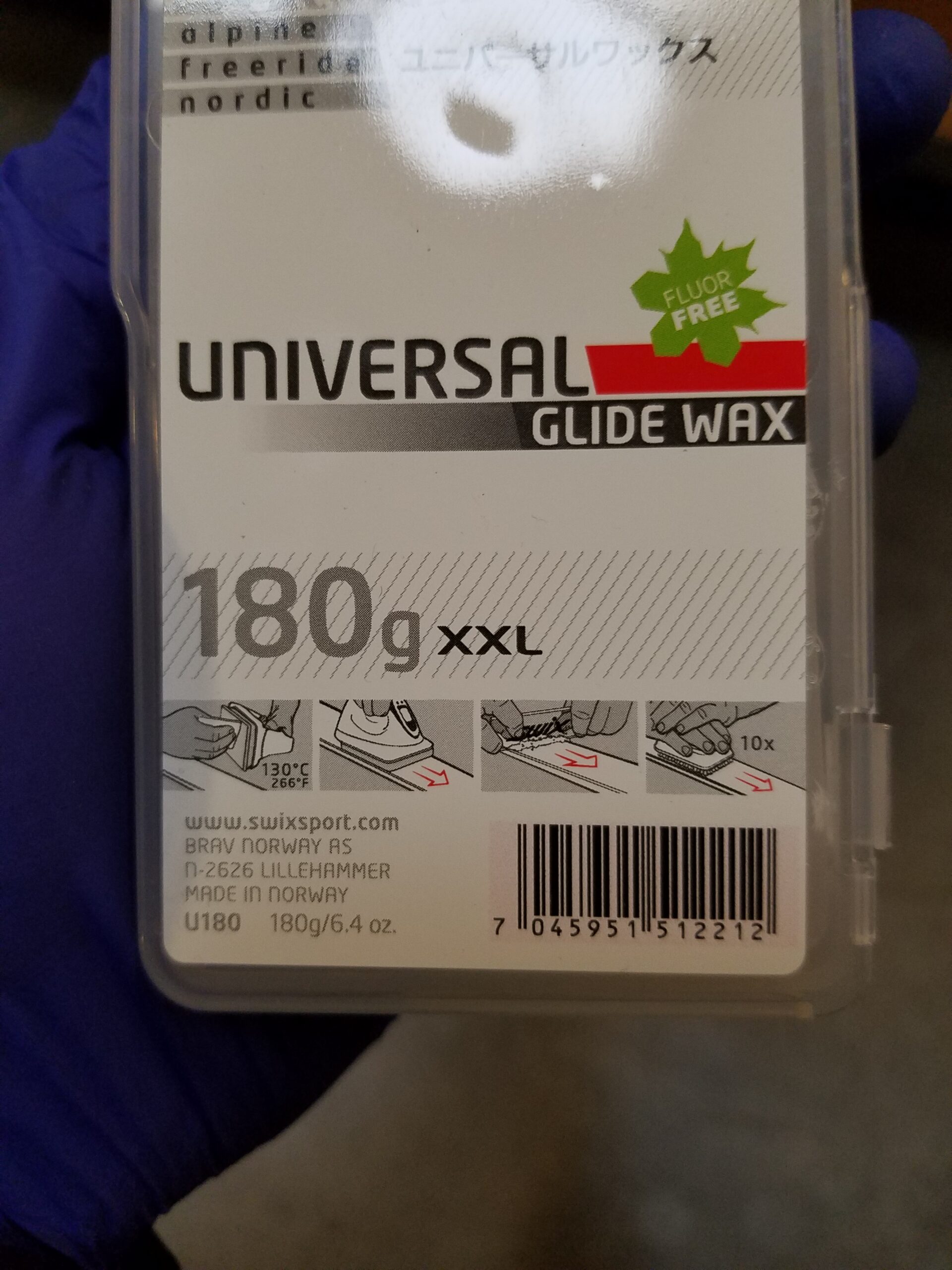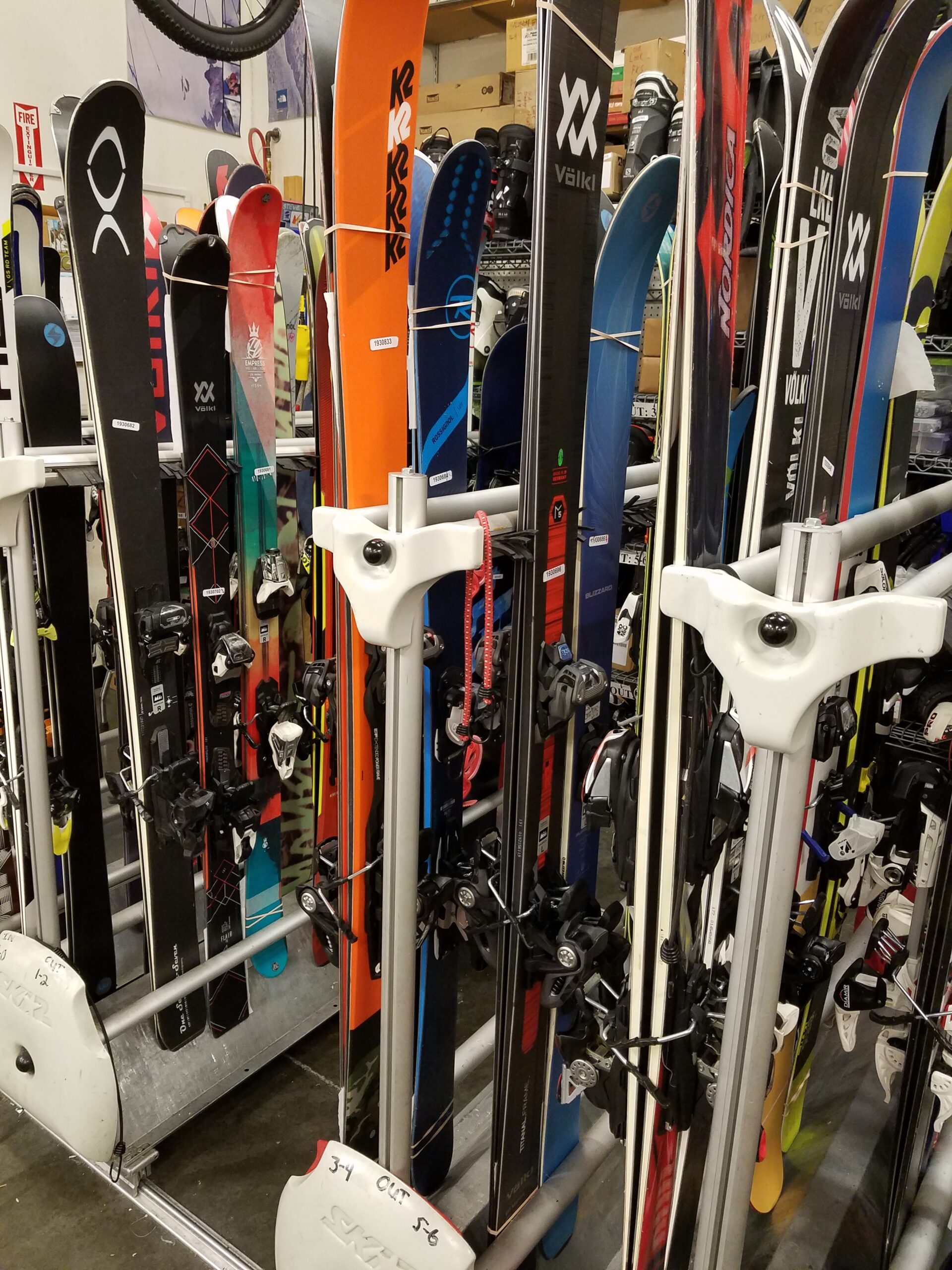We may earn money or products from the companies mentioned in this post, but this does NOT cost you anything extra! Check out my full disclosure for more info.
Keeping your board or skis happy with a fresh coat of wax is important and necessary.
The wax is what provides a layer of protection to their base. It also provides for better momentum on the slopes. You really don’t want to get stuck on the flat parts, do you?
You might have a few questions about waxing your board or skis. I know I did. What type of wax should you use, is waxing difficult, and how often should you wax your board?
We will answer all those questions and more. For example, I would suggest waxing your board every two to three days of riding.
Assuming you are doing many runs a day, this is just a suggestion and a good place to start.
Just as a side note, I might refer to skis and board thought-out this article.
I mainly use them interchangeably, but I might be a bit biased as I snowboard.
Just know that I’m referring to your chosen sports gear you are waxing.
Wax Decisions
First of all, it’s important to know that all skis (backcountry and alpine) and snowboards need wax. As I mentioned above, you do not want to get stuck in the flat section.
Since it’s the start of the season, let’s get a fresh coat on. There are many different waxes out there.

You might see a few different options while looking for the wax you want to use.
The most common is the temperature-specific wax that is applied with a waxing iron.
These waxes work within an outdoor temperature range that you will find on the package.
In the image below, it’s in the lower-left corner (130 – 266 degrees).

Suppose you are a recreational skier and don’t want the hassle of the above wax. The universal wax could be for you. One type is temperature-specific wax, as they are made to work in all temperatures.
Then there is the rub-on wax. This is best when you don’t have the time to get out all the equipment needed to complete waxing. You may even see people applying this wax with a sponge in the parking lot before hitting the slopes.
As you can see, there are a variety of waxes out on the market today. My suggestion is to stick with the most common one, using a waxing iron. It’s not that difficult to master, and you might find that you really enjoy doing it.
Below is a video on how to wax your board and skis.
Tools Needed
As you can imagine, you need quite a few tools when waxing. In a nutshell and in a perfect world, I would suggest the following:
- Wax – There are many options out there, and even some that you can apply while on the mountain. I would suggest getting the Swix Universal.
- Waxing Iron – These special irons run from $40 all the way up to a few hundred. I would suggest that you get one that is specific for waxing. I have seen people using a regular iron, but this can cause the wax to burn, and it is not as easy to control the temperature.
- Wax Scrapers – Once you get the wax on, it might seem counterproductive, but you need to scrape a majority of it off. The Swix Plexi Scraper 4mm works very well for this.
The next few items are nice to have but not necessarily needed. If you want to have it, get everything listed here, and you will be off to the races (no pun intended). But if you are on a budget, the first three items are needed above.
Get the following when you have the money. This is also a great way to make sure it’s something that you enjoy doing.
- Brushes – Used mainly for post-wax removal that provides a great look and function. Swix makes a nylon brush that works great.
- Ski Vises – Yep, used to mount skis, so they don’t go everywhere on you. I like the Swix Nordic Travelvise Ski Vice due to its ease of use and portability (if you have the gear, you might be working on your friend’s gear too).
- Ski Files – This is used for tuning your skis. I will be honest. I don’t know much about this process and would take my gear to a shop to do this.
But, like everything in life, you only need the basics to get a wax done.
I also love giving plugs to REI; if you don’t already know, members get free waxing daily! They generally charge about $10 to do this, but you get it free if you’re a member. Yet another reason to be a part of your local REI.
How To Apply Wax
There are videos and other information you will find online. I will do my best by listing the steps you can take to wax your board or skis.
I want to toss this out there, have a workspace that you do not care if there is a mess.
Why do I say this?
You will get wax on the surface you are working on. Not only that, but you will have to scrape the wax off, a later step, and it will go everywhere. I wanted you to be aware of this before you started. You can thank me later.
Keep reading below for more details on waxing, but I love videos, and REI makes some amazing ones. Check out the one that I promised above. I hope you enjoy it:
Speaking of the iron, having one with a dial is important as you want it to be hot enough to melt the wax, not burn it!
Another piece of advice is that waxing is best at room temperature. If your board has been cold outside, let it warm up a bit before starting the waxing procedure.
You will also notice that all ski shops and videos you watch will show work from the tip to the board’s tail.
This is for applying wax, scraping the wax off, and even brushing at the end. This is due to the direction you are going down the slopes. You want to keep everything consistent.
Prepare Your Board
Boards are much easier to do this, but I’ll cover how to complete this step with downhill skis.
- You want to retract the ski brake, and it’s best to use a strong rubber band on both arms. This will get the brakes out of your way while you are waxing.
- Place your skis in the vice to securely hold it. If you are doing a snowboard, you can rest the board on top of the vice.
- Don’t have a vice? No problem, and you can pace the board or skis on an elevated surface, such as milk crates or books. Just try and make the surface level.
- Grab a clean rag, add some alcohol, and remove any dust and other items. You want to make the base clean, and if there is a lot of gunk on it, this is where a wire brush could help.
- After wiping the bottom, remember to use a clean rag with just a little alcohol and level them alone until dry. Usually, it takes around 15-20 minutes.
Waxing Time
Check out the video above for a visual. But, once you have done this a few times, you will see it’s a straightforward process.
- If you haven’t heated your iron, do that now.
- Grab your bar of wax and touch the iron. You want the wax to melt and not smoke.
- Now hold the wax in one hand, iron in the other, and start dripping wax onto your board. You want to be two to three inches away from the board, moving in an ‘S’ pattern.
- Now place the iron onto the board itself. This will spread the wax out evenly across the board. You want to keep even pressure and keep moving in a controlled manner. Do NOT stay in one place too long.
- A good indicator that you are doing it right is that the side you start on should be dry by the time you reach the end.
- Now that you have a layer of even wax, it’s time to rest. Let the board cool, generally for around an hour. If you’re working on skis, you can start the other one.
Removing Access Wax
You should be proud of what you have done so far. And now that you have taken a break (or waxed your friend’s board), it’s time to remove the extra wax.
Remember, when you are waxing, you are always working from the tip to the tail.
Grab your plastic scraper, the one I mentioned above. You will place the scraper on the board using a 45-degree angle. Do this in continuous strokes.
You will have to do a few passes, more than you might think. You know you are done when you do not see much wax when you go for another pass.
Also, note you want to remove access wax from the metal edges. Some of the plastic scrapers have this included, or use the short end if yours doesn’t.
Now, grab your nylon brush and continue the process. You want to brush, from the tip to the tail, at least 15 times.
When you are done, step back and admire your work. Well, Done!

Time To Get Our Wax On!
I hope this has helped you get ready to wax your own board. I always like being able to work on my own gear.
If you have any questions, please ask them below, and I will be sure to get back to you.
As you can see from the photo, there is a lot to do, and it’s snowing in the hills. It’s time to get our wax on.
Still have questions?
Or, have you waxed your own snowboard or skis?
Let me know in the comments below.
I would also be interested in the equipment you use. And if this is your first time waxing, let me know if this overview helped you out.
Now get to the mountain and shred some hills!

I am such a newbie to snowboarding and snow skiing that I didn’t even realize why the wax would be important to have. I think it’s probably because I’m less worried about getting stuck on flat parts and more concerned about getting too much momentum and being unable to stop. However, this is great to know as I learn more about the sport every day and get a little bit more confident on the slopes. I appreciate the easy to follow guide so that even a beginner can follow along and apply the wax properly.
That’s great to hear, and welcome to the sport! There is a bit of a learning curve, but it’s so much fun.
I hope you get out there this year, as I think many of us are thinking the same thing.
As always, I like how you break things down into simple steps. And love the video!
Thanks, and I’m really starting to think I need to make my own videos. In my ‘free time,’ I think I’m going to start looking into it.
It would be interesting to see if others would like that as well.
Great information on one of the most important steps to having a great day on the slopes. This is the same reason they wax airplanes and drag race cars, they move through the air with much less effort.
As you state all waxes and irons are not created equally. Sometimes it takes experimenting with different combinations to find out what works best for each packing of the snow. Do you think the wetness of the snow makes a difference in how you wax your board.
John
Thanks for stopping by and leaving a comment John. That’s interesting about airplanes and race cars. It also makes a lot of sense.
As for the wetness of the snow, yes, it depends on a few factors. Wet and dry friction being two. Besides having good edges, having the right wax for the conditions you are in will help. So, it’s a good idea to know where you are going, or better yet, know the type of conditions you will be in for your fun day on the hill.
Hello there!
That is really an amazing and helpful piece you provided there. It is appreciated that you took your time to explain to us how to wax a snowboard or skis. I got interested to read through because I’ve always known that keeping my board or skis happy with a fresh coat of wax is important and also very necessary.
Thanks
You got that right. It will help get you down the slopes. Thanks for stopping by, and I hope it’s a fun-filled winter.